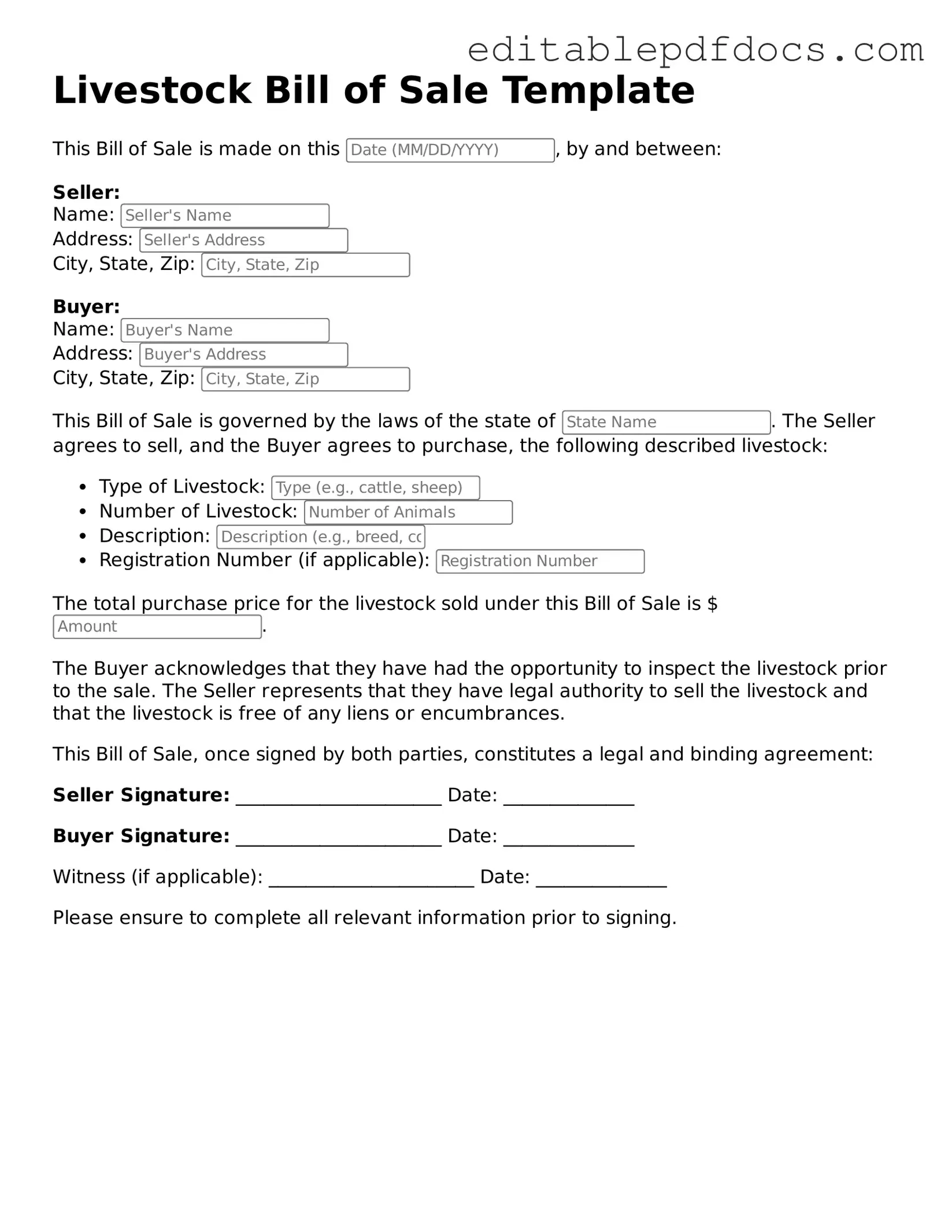Filling out the Livestock Bill of Sale form can seem straightforward, but many people make common mistakes that can lead to complications down the line. One frequent error is failing to include all necessary details about the livestock being sold. Buyers and sellers must provide accurate descriptions, including breed, age, and identification numbers. Omitting this information can create disputes later.
Another mistake involves incorrect or incomplete buyer and seller information. It is crucial to list full names, addresses, and contact details. Missing or incorrect information can hinder communication and complicate the transaction. Always double-check this section before finalizing the form.
Many individuals also overlook the importance of the sale price. Some people write down only the total amount without breaking it down into a clear format. This can lead to confusion regarding payment terms. Clearly state the sale price and any additional fees or conditions related to the transaction.
Additionally, failing to date the form is a common oversight. The date of the sale is essential for record-keeping and legal purposes. Without it, you might face challenges proving when the transaction took place, especially if disputes arise later.
Another frequent error is neglecting to sign the document. Both the buyer and the seller must sign the Livestock Bill of Sale to make it legally binding. Some individuals assume that verbal agreements are sufficient, but a signed document provides essential proof of the transaction.
People often forget to keep copies of the completed form. After signing, both parties should retain a copy for their records. This step is crucial in case any issues arise in the future. Without a copy, you may find it difficult to resolve disputes or verify the terms of the sale.
Lastly, some individuals do not seek legal advice when needed. If you are unsure about how to fill out the form correctly or have questions about the sale, consulting with a legal expert can save you time and trouble. Taking this step can help ensure that all aspects of the transaction are handled properly.
